The True Story of How I Almost Died (Twice)...
...Searching Argentina’s Lost Valley for Rare Bottles of Extreme Altitude (8,000+ ft.) Malbec

"After surviving on nothing but coca leaves and goat meat for days... braving two flashfloods (in the dark)... getting bucked off a horse in the middle of nowhere (at 8,000 feet above sea level)... nearly freezing to death sleeping under the stars with an old gaucho (who was most definitely lost)... we finally found a way to bring this extreme altitude red wine – so dark it’s called ‘black wine’ – to American shores... no middle men... no inflated prices...” – Will Bonner
Suddenly, it was pitch black...
Suddenly, it was pitch black...
I realized that the truck’s headlights had gone under the roaring water.
I began to feel the front wheels lift up as the truck slowly turned with the current of the flood...
The woman in the seat next to me screamed. In the back seat, Gustavo began praying to the Virgin Mary.
I was about to die...all for a bottle of wine.
In my defense, it was a great vintage...
When people hear that I run the only private wine partnership in America, they assume I sit around in Napa tasting the latest ultra-smooth (and overpriced) cabernet sauvignon...
...or that I’m always jetting off to France to taste the latest 100 point St Emilion (which, surprise!... tastes the same as the 89 pt St Emilion!)...
They don’t expect to hear about the time our truck overheated on a single-lane mountain road with fog so thick you could barely see ten feet in front of you...
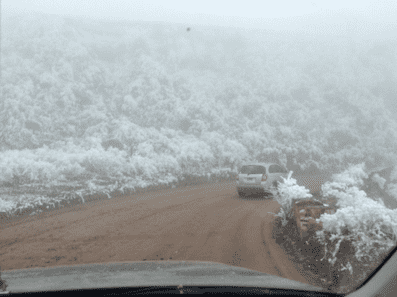
...or the number of times I’ve been kicked, trampled, and bucked off by horses...
...or the amount of strange meat cooked over an open fire I’ve eaten... or the even stranger dinner companions I’ve had (from guys who own private planes...to cowboys who have never even seen one up close)
In my weakest moments... say, when I’m trapped in a flashflood at night in the middle of the desert...
...well, in those moments I do sometimes wonder why I’m in this business at all.
After all it, would be far easier to buy a few thousand gallons of bulk juice from the California Central Valley (or southern Australia), mix in some oak extract and “mega-purple” dye, then slap a ‘cool’ label on it.
(Very common in the mass market wine world... especially in most so-called ‘wine clubs’... and that’s not the half of it... more on that in a moment...)
Of course, the 1,000 or so members of my private wine partnership would never go for that.
Not that we’re wine snobs...
...we’re just a group of Americans who got tired of those flimsy wines you find at most supermarkets – you know the kind... the cheap throat-burning reds...the syrupy yellow whites...
The mass market wine industry’s best-held secret is just how similar their process has become to manufacturing at a soda pop plant... or worse, an oil refinery.
First, the vineyards aren’t your traditional old world vineyards... there are no gnarled fruit trees offering shade to the old vigneron as he carefully prunes his vines... tasting a grape every few minutes to see how they’re coming along...
These industrial vineyards stretch out for acres and acres... planted in rows wide enough for giant pesticide sprayers and machine harvesters to pass through...
Like a chicken farm, the operators take no chances when it comes to their profit margin.

Is this the new reality of modern wine making?
The grapes are often overwatered to artificially fatten them up (more juice = more money).
At the first hint of bad weather, they harvest the grapes still green... and later cover it up by adding more sugar during fermentation.
(A lot of those popular wines from California and Australia you find on kitchen counters are notoriously sugary – even if they cleverly use acids and tannins to hide the sweet taste)
In mass market vineyards, machine harvesters aren’t precise enough to grab only grapes... so the resulting juice also contains bits of twigs, leaves, dirt, and even insects.
So they run the wines through a centrifuge... then a micropore filter which completes the job of removing any trace of sediment...
It’s a sterile, safe way to make wine... but the sediment is precisely what contains those special aromas, unique to each vineyard, that we all seek in our wine...
And by the way, I’m far from the only one saying this:
As famous wine importer and best-selling author Kermit Lynch says:
“Only in this century have we seen the hard-earned knowledge of the ancients discarded, almost overnight, in the name of progress...
“[Winemakers] feel secure with a sterile wine. I say if it is sterile is not alive.”
Or, as famous wine critic Robert Parker puts it:
“Anyone who tells you that excessive...filtration does not damage wine is either a fool or a liar.”
(Especially true for Pinot Noirs and Chardonnays... they get destroyed by this)
There’s a reason that modern wineries look more like oil refineries than the old “chateaux” behind legendary wines like Lafite or LaTour...
...Modern industrial winemaking is all about meeting ever growing demand...any which way you can...
When they can’t afford oak barrels... they used oak “flavoring” and other additives
When the wine isn’t dark enough... they add purple dye called “Mega Purple” (far more common than you think)
When the wine comes out cloudy with sediment from the soil and air... they use “fining agents” like potassium ferrocyanide (yes “-cyanide”)
When the aroma’s not “big” enough... they add enzymes
When it’s too flimsy or sugary... they add acids (which destroy any subtlety in flavor)
And that’s not including the chemicals that find their way into wine from the industrial growing process...
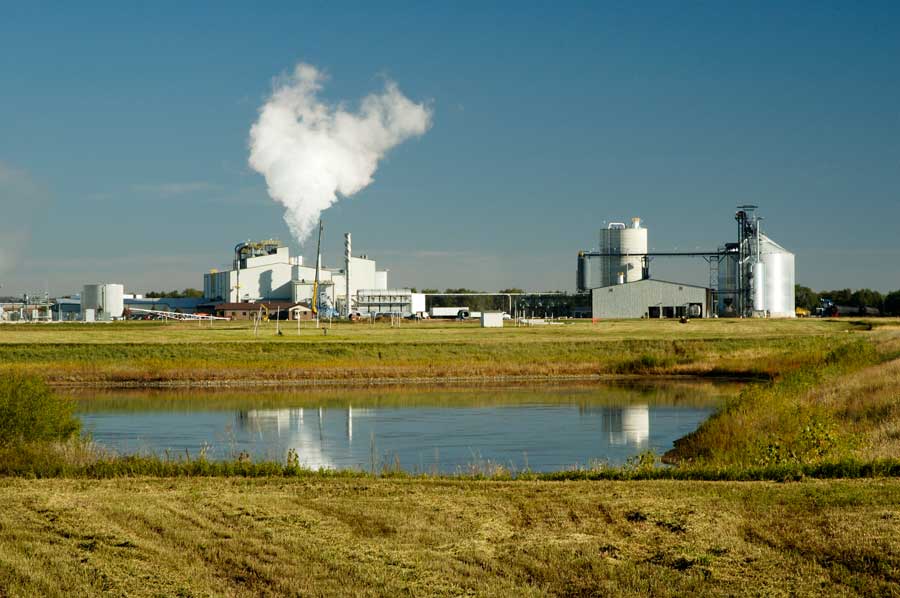
Would you drink wine made here?
Did you know that a 2013 study from France found traces of pesticides in 90% of wines sold in supermarkets?
And a lab test of 10 Californian wines found the weed-killer glyphosate in every single bottle (the World Health Organization recently determined that glyphosate, the main ingredient in RoundUp, may potentially promote cancer).
You can see why the alcohol industry fights tooth and nail to keep ingredients off of labels, spending as much as $30 million for lobbying last year.
You can also see why I go to such extreme lengths all to find a single bottle of wine.
Finding a wine that is truly “alive”... takes a little legwork...
That’s how I happened to find myself trapped in a truck... at night... in a flashflood all the way out on Argentina’s wild, northwestern frontier.
If you’ve had wine from Argentina before, it was probably from Mendoza.
Mendoza’s a nice place - five-star hotels, ultra-modern wineries with all the latest gadgetry... they even have paved roads!
500 miles to the north... lies a little valley, surrounded by miles of desert on one side and the jagged peaks of the Andes mountains on the other... a valley known as the Calchaquí...
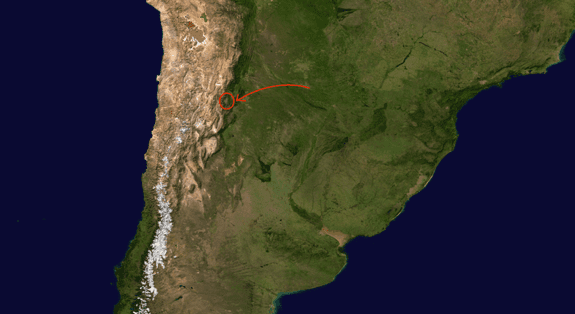
The Calchaquí Valley – The World’s Most Isolated Wine Region
Calchaquí wine is almost impossible to find here in America... you can’t even get it at the finest restaurant in Manhattan.
Entire vintages sell out in 24 hours to private lists of rich private buyers.
A single bottle – if you have to buy it retail – can go for over $500...
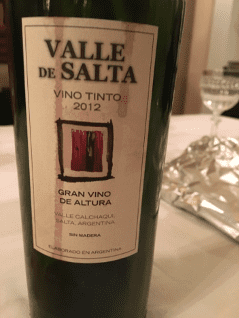
A rare bottle from the Calchaqui
When I popped my first bottle of this bold wine... I first got a hint of smoke... vanishingly short (the locals claim it comes from cattle drive campfires that so often burn out on the high plains nearby)
...then came the blackberry, the herbs, the leather... a hint of charred earth drifting across my palate... and an incredible, rugged mouthfeel.
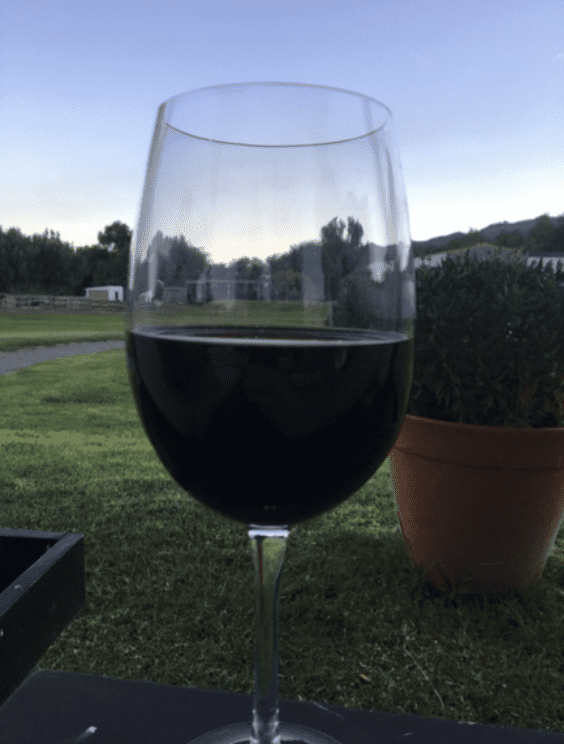
A deep, intense wine so dark it looks black
In that moment, I was instantly transported...
To a land where cowboys still sleep under the stars using their saddle bags as pillows
...where women work looms in the early dawn’s first light
...where the nearest city is six-hours away across a jagged mountain landscape
... where a small brotherhood of winemakers – operating at what feels like the edge of the earth – follow a tradition 200 years old...
If you enjoy wine... if you’d like to taste wine as it truly should taste... then you need to sample an extreme altitude wine from the Calchaquí...
In fact, with your permission I’d like to send a bottle straight to your door. No middle men. No inflated prices.
I’ll explain why I’m doing this in a moment... But first let me introduce you to the “wine from the end of the world”...
Wine from the End of the World

Argentina’s Northwest Frontier – The End of the World...
The Calchaquí is squeezed between miles of desert and the jagged peaks of the Andes Mountains...
After flying 5,000 miles to Buenos Aires... then another 500 miles to the small colonial town of Salta... you get in a 4x4 truck and begin your ascent into the mountains, reaching a plateau far above the clouds... then you continue into a vast desert...
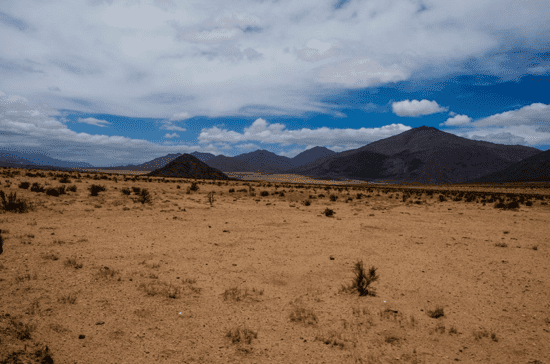
(where you’ll be glad to have a couple spare tires in the back)

After six to eight hours, you finally reach the literal “end of the road”... the Calchaquí Valley.

The Hidden Vineyards of the Calchaqui – 8,421 feet above the world
8,000 ft. Above the World, the Secret to a Great Wine
Journey through this vast landscape... and you’ll hear gale-force winds ripping through nearby poplar trees... before they nearly blow you off your horse...
You’ll find yourself suddenly short of breath in this thin atmosphere... (the locals claim the winds “drive away the oxygen”... and eventually you start to believe it!)
Despite the heat, you’ll wear long sleeves and pants... to protect from the intense UV rays (the sun here is 80% more intense than Bordeaux)
At night, you’ll add more layers as the temperature suddenly drops as much as 77 degrees!
Winemakers, they say, like their grapes to get a bit of challenge.
But here, they cling to the edge of survival.
Were they any other kind of grapes...they’d probably never make it...
Long Extinct in Europe, an Old Vine Lives on Here
Nearly two hundred years ago, a few brave souls carried malbec grapes across the Andes from a port in Chile.
A good thing too...because after malbec arrived in Argentina, all the European malbec got wiped out (along with most of Europe’s grapes) in an event called the “The Great Blight.”
In fact, the European wine industry was only able to recover by replanting with vines from America.
So when people talk about great French wines today... they’re not actually French at all! They’re American!
But the blight never touched the remote, isolated wineries of the Calchaquí. Today, the old French vines remain there today...much older than any you’ll find in Bordeaux.
30 years is considered old in most parts of the wine world... in the Calchaquí, a third of vines are older than 100 years...
In such an extreme environment, these “lost vines” yield a third of what they should...
...for making money, it’s a losing proposition...
...especially given the near-total lack of modern machinery and the fact that the nearest port is about 1,000 miles away...
But they also produce a one of a kind wine...
First time drinkers often note its inky, near-black color.

So opaque they call it ‘black wine’
That’s a tell-tale sign of extreme levels of resveratrol.
Here’s what we found when we had a certified lab test our extreme altitude malbec, Sunal Ilógico, against a common California red:
- ✓ 10 TIMES more resveratrol
- ✓ 93% less sugar
- ✓ 80% higher levels of anthocyanin (an antioxidant that lab and animal models suggest has a “anti-angiogenetic” effect, which is to say that it may inhibit tumor growth)
What Extreme Altitude Wine Does to Your Body
According to Harvard Professor David Sinclair, PhD, the chief benefit of resveratrol is NOT actually as an antioxidant.
Rather, resveratrol activates what’s known as the “sirtuin pathway.”
The “sirtuin pathway” in grape vines is essentially what allows the vine to survive the extreme conditions of the Calchaqui. It’s one of the principal longevity pathways found in most plants and animals.
When the plant comes under stress, it becomes flooded with resveratrol, which activates this “sirtuin pathway” and changes the plant from weakling to ultra-resilient survivor.
Human beings also have a surtuin pathway that works in the same way.
For instance, surtuins likely explain why fasting – which stresses the human body – appears to increase the human body.
So what does resveratrol have to do with our own sirtuin pathway?
Well, scientists now believe that resveratrol passes into YOUR body...and activates YOUR sirtuin pathway just as it did in the plant.
Effectively, the resilience and longevity of the plant – hard won after years in the wilderness – is passed onto you!
To quote Harvard professor David Sinclair, PhD: “if you stress a grape, you’ll get great wine...but you’ll also get a lot of resveratrol...when we ingest resveratrol, we get the same health benefits as the plant...we get the benefit of the plant stress as longevity.”
Wine 200 Years in the Making
It’s a strange feeling when your car’s partway underwater and you’re still in it.
Especially when it’s pitch black.
Actually, it’s not a strange feeling at all. It’s panic.
A ways across the raging torrent – a wide, bone dry river bed just an hour before – a light flashed. Likely one of the vine workers with a flashlight.
He had probably seen the headlights sink beneath the water.
My brother gunned the engine, hoping for the best.
Then...a miracle. The front wheels caught on something - a log or a boulder? Just enough traction to propel the truck forward against the current on to a sandbank. An old man with a flashlight came running over the truck
The people of the Calchaquí don’t scare easily. After a lifetime up at the edge of civilization, their faces range to placid to imperturbable.
Yet, this old man’s face showed something almost close to alarm.
Vino? we asked.
Bueno... he replied.
Minutes later, we were sitting in an old gaucho bar way out on the frontier, uncorking a bottle.
Three Extreme Altitude Argentine Wines I'd Like to Send You...

The "Rogue" Malbec
6.000 ft
From Argentina's most important winemaker "Pepe"Galante. Sustainable farming. Hand harvested. Extremely limited production.

A Never-Before-Imported 90 pt Malbec
8,950 ft
From an extreme altitude vineyard in Argentina’s remote Calchaquí Valley, this rare malbec is coming to American shores for the first time. Not available anywhere else.

The "Gaucho" Malbec
6,100 ft
Cumpa is slang for "friend" used by the Gauchos of Argentina. Natural fermentation. Zero Filtration. Not available at your local supermarket or fine wine shop.
Experience Wine Unlike Anything You've Ever Tasted Before... For A Fraction of the Price

Straight from the Extreme Altitudes of the Andes Mountains
Grapes are grown at an altitude of 6,000-9,000 ft and above. Intense UV light and day/night temperature swings create berries with thicker skins, meaning more tannins and flavor compounds for robust, complex wines.
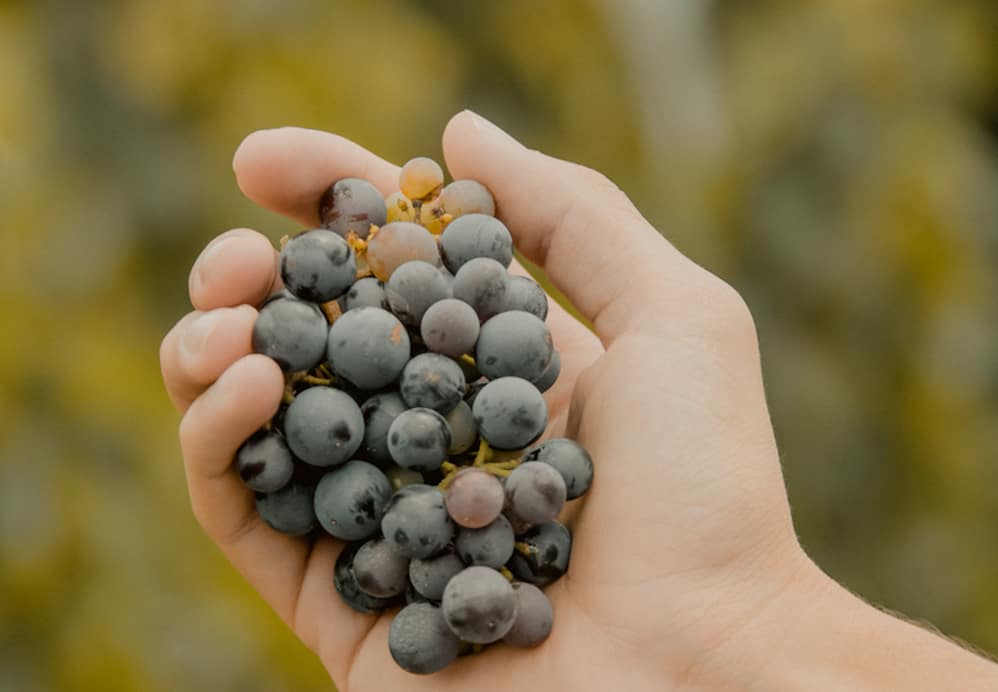
Packed with Intense Flavor & Antioxidant Power
Water scarcity creates smaller berries with more concentrated flavor & the thick skins developed by these grapes have high levels of polyphenols, including flavinoids & resveratrol
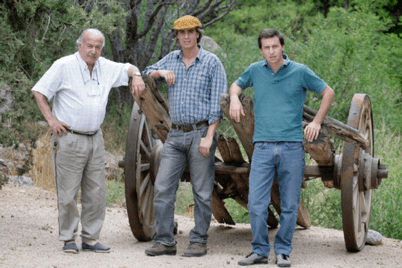
Rare, Small-batch wines from Family Producers
For 200 years now, a few small families deep in the Andes mountains have been making a dark malbec wine unlike anything else you’ve ever tasted. These wines are made in such small quantity, many wouldn't normally make it to the U.S.
Enjoyed By Former Bordeaux Winemaker, Julien Miquel...
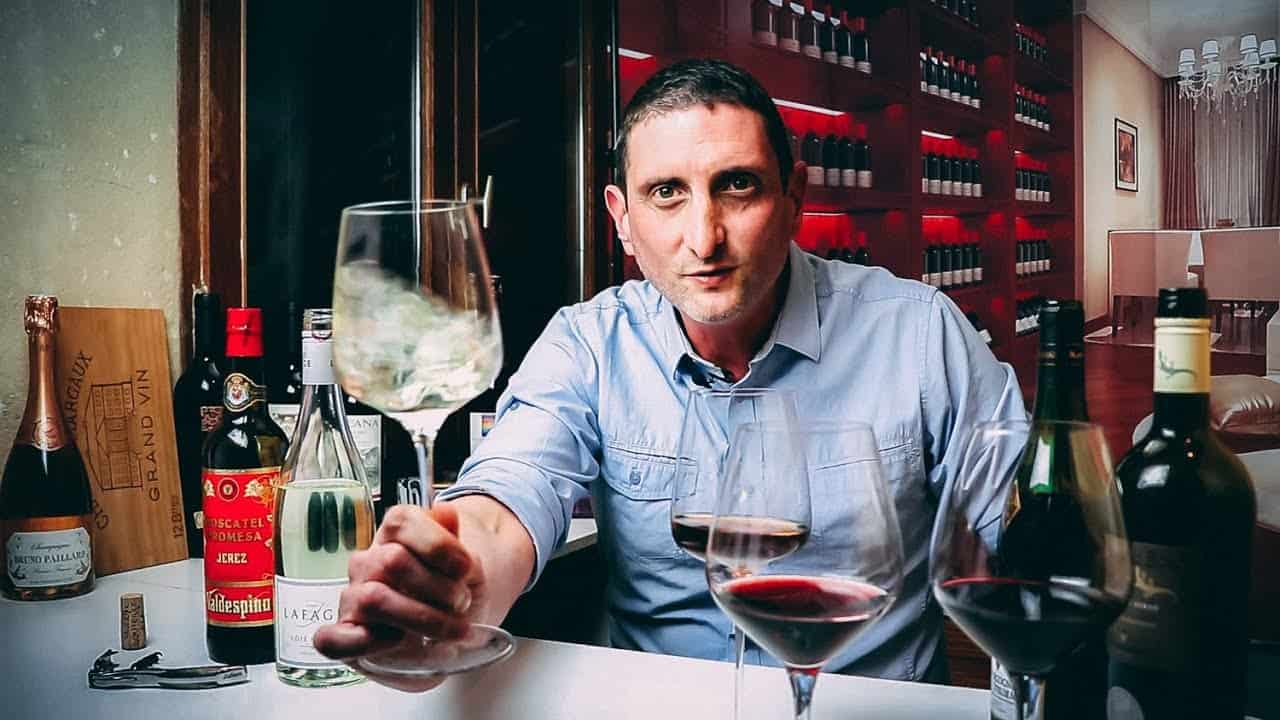
"I have personally traveled the world making wine as a winemaker and tasting wines from different continents, from California to Australia... through Spain, Italy and France...
...But I have never come across wines like these before!"
- Julien Miquel, AIWS
What Makes These Malbecs So Special?
Do you know where your wine comes from? Your local grocery store isn't going to mention that the mass-market wine you're buying is loaded with “mega-purple” dye and some oak extract...
Grapes from the remote vineyards of the Calchaqui Valley cling to survival through:
✓ Poor Soil (dry, dusty: excellent for grapes)
✓ Bad Weather (no rain, strong winds)
✓ Thin Atmosphere (breathing is hard work)
✓ Extreme UV levels (80% more intense than Bordeaux)
✓ Temperature drops as much as 77 degrees at night!
✓ Extreme Altitude (up to 9,000 ft.)
✓ Extreme Isolation (fewer pests require fewer chemicals)

What Our Customers Say About Our Wines!

The Bonner Private Wine Partnership Experience
- Exclusive, in-depth descriptions of each wine and the region it comes from, in order to give you a true Argentine tasting experience.
- Discounted price on each wine you’d like to re-order, plus discounted wines from our cellar
- Extensive wine & food pairing information, to further your Argentine wine journey
- Access to never-before-imported wines from wine regions like Argentina, France, Spain, Italy & more.
- Risk free: Cancel anytime for free, no commitments.
- 100% satisfaction guarantee: if you receive a bad bottle, just let us know and we’ll replace it.
Simply Enter Your Information Below
Our wine experts in Argentina carefully select extraordinary and exclusive wines from small-batch, family vineyards deep in the Andes Mountains.
About the Bonner Private Wine Partnership
Founded by Will Bonner, the Partnership is a group of wine lovers who come together to import great, small batch wines that might otherwise get overlooked by large importers. No middle men. No additive-packed supermarket wines. No inflated costs.
WE CANNOT SHIP TO THESE STATES:
Alabama, Alaska, Arkansas, Delaware, Hawaii, Indiana, Kentucky, Mississippi, Utah
If you live in one of these states, you’ll need to select an alternative delivery destination.
Please be aware: We cannot deliver to P.O. boxes.
An adult signature is required for all shipments of alcohol.
This is a risk-free offer. You have 30 days to request a full refund. And don’t worry about returning the wine! Each shipment is billed separately. Subsequent bi-monthly shipments will be billed at our regular rate of $99. But there’s no obligation. For subsequent shipments we will also offer 100% refund but the wines must be returned with corks intact. Otherwise, we can only offer a 50% refund. But there’s no need to receive wines you don’t want. We’ll let you know when we’re preparing your shipment and you can always give us a call to cancel. You truly risk nothing by accepting this offer today.
All sales on this site are processed and managed by WineVIP, a California Licensed Retailer.
PRIVACY POLICY TERMS & CONDITIONS
ALL RIGHTS RESERVED, BONNER PRIVATE WINES 2022
